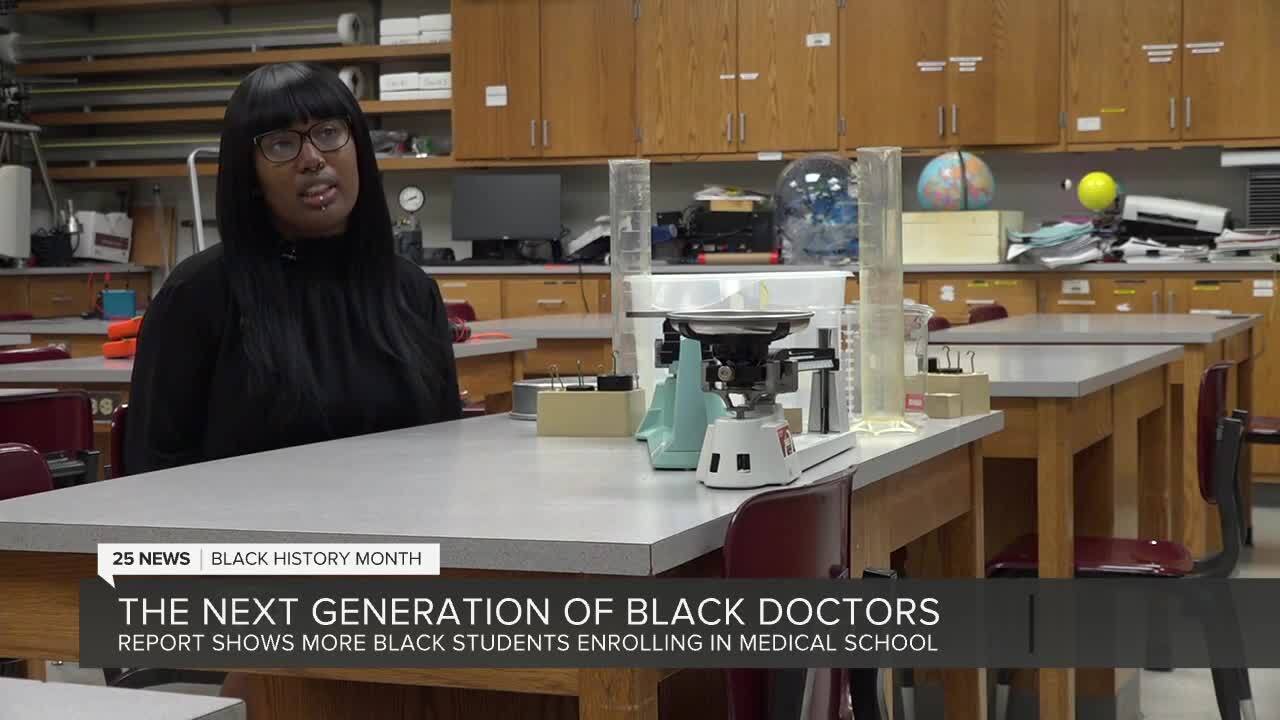TEMPLE, Texas — The increase of Black and African American doctors in the U.S. has been a slow one.
According to a 2018-2019 report by the Association of American Medical Colleges just over 12,000 students accepted and enrolled in medical school, however just over 1,000 were black, but things appear to be looking up. This spike in enrollment gives doctors like Dr. Sherronda Henderson hope for the future of medicine.
Dr. Henderson is the Interim Division Director Hematology-Oncology at Baylor Scott & White Temple. She's been at BSW for the past 12 years.
"It's actually an honor. It's an honor and a blessing that I don't take for granted," said Henderson.
As she helps and heals her community, Hendersons acknowledges she stands on the shoulders of doctors who came before her.
"Without her becoming a physician within the US, I wouldn't be where I am right now. Knowing that many have come before me and suffered much more difficult paths if they could get to where they were and become as successful as they did, then I know that I can do it," said Dr. Sherronda Henderson.

Dr. Rebecca Lee Crumpler was the first black female physician in the U.S. She graduated from New England Female Medical College, now the Boston University School of Medicine in 1964. Dr. Crumpler cared for enslaved people who other doctors refused to treat.
Today, physicians who look like Crumpler and Henderson, are few and far in between.
Dr. Henderson said, "It makes me feel frustrated and disheartened because I know that because we are lower in number."
Of the active physicians in the U.S., 5 percent identify as Black or African American according to the Association of American Medical Colleges. Having a doctor as a Black patient is critical according to Dr. Sherronda.
"Studies have shown that outcomes for patients that look like us are actually better when you have a physician that looks like you. And so that creates a level of trust between patients and their physicians. Also, with that level of trust leads to better compliance in treatment, recommendations, and care and, again, overall better outcomes," said Dr. Henderson.
However, new data from the AAMC shows black students who started medical school in the U.S. rose by 21 percent from 2020 to 2021. Students at Central Texas College hope to be a part of that growing statistic.
Autumn Morris is a second-year Biology Major at Central Texas College. One day she hopes to be a cardiologist. Her dreams started when she was a child. She chose the path of cardiology after her mother was diagnosed with congestive heart failure.

"Ever since I was a little girl, I’ve loved patching up wounds passing out Band-Aid's alcohol pads whatever the case maybe I definitely feel like that’s my passion. This is my dream. Students 5 years or 10 years after me, they will know that that number is on the rise and it makes it easier for them to get to that point and to succeed," said Morris.
Trina Orr is also a second-year Biology Major at Central Texas College. She's planning to explore the neurology track with the hopes of becoming a neurologist. Orr also found her passion for the medical field as a child. She hopes to be the representation she wants to see.

Orr said, "You don't see us, a lot of people of color don't go into the hospitals because they don't see people like us. I'm proud to know that I am contributing to that number, and I think that it's very inspirational for our younger generation period."
Orr recently got accepted to UT Austin where she plans to finish her degree, and then apply to medical school. While Morris is planning to attend Texas A&M to complete her Biology degree before heading to medical school.
Seeing the numbers of black students getting accepted and enrolling in medical school gives Henderson hope for a brighter future. Dr. Henderson said she strives to be a mentor to young students so they can feel supported and see that their goals are attainable.
"Providing that mentorship to students that are coming up behind us, so students can know that it is possible and see, see physicians that look like them are successful like me," said Dr. Henderson.






